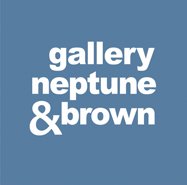By Mark Jenkins, The Washington Post
The stepson of pianist Phineas Newborn Jr., Frank Stewart started going to New York City jazz clubs in the late 1950s, before he was even a teenager. When Stewart became a professional photographer, jazz players were among his first subjects. Music-making remains central to Stewart’s work, but it’s not the only motif of “Time Capsule,” a retrospective at Gallery Neptune & Brown. And sometimes the artist positions a musical instrument at the center of a picture that has a complicated story to tell.
One of the show’s most poignant images is a close-up of an electric organ, destroyed and abandoned in a church in New Orleans’s Ninth Ward, the African American neighborhood swamped by Hurricane Katrina. Simpler emotionally but just as potent visually is a picture of a sousaphone’s shiny bell, which refracts a marching band musician’s uniform into an abstract red swirl.
The earliest photos here, dating from 1969 into the 1970s, are black-and-white vignettes from Manhattan streets (mostly in Harlem) and clubs. Soon Stewart expanded his range, shooting in Cuba and West Africa and making informal portraits of African American artists with varying degrees of formality: Alma Thomas poses solemnly in her studio, while a bathing-suited Romare Bearden is up to his thighs in the ocean.
Stewart didn’t switch to color — or at least start showing color pictures widely — until about 20 years ago. The change significantly expanded his style. While most of the color photos have documentary elements, some of them focus entirely on forms and hues. Jazz-club backdrops switch from gray to vivid blues and purples, and a more recent trip to Cuba yields a tight shot of a blue car whose weathered hood appears to have been scrubbed white by sunlight.
In other Stewart photos, such phenomena appeal to more than the eye. A second post-Katrina scene shows a partly submerged car between two modest frame houses. The car and the houses are white, and so is the reflection on the water, a patch of light shaped by the outlines of the houses into an inverted cross. The emblem is just a momentary glimmer, but Stewart frames it so it appears both eerie and apt.

